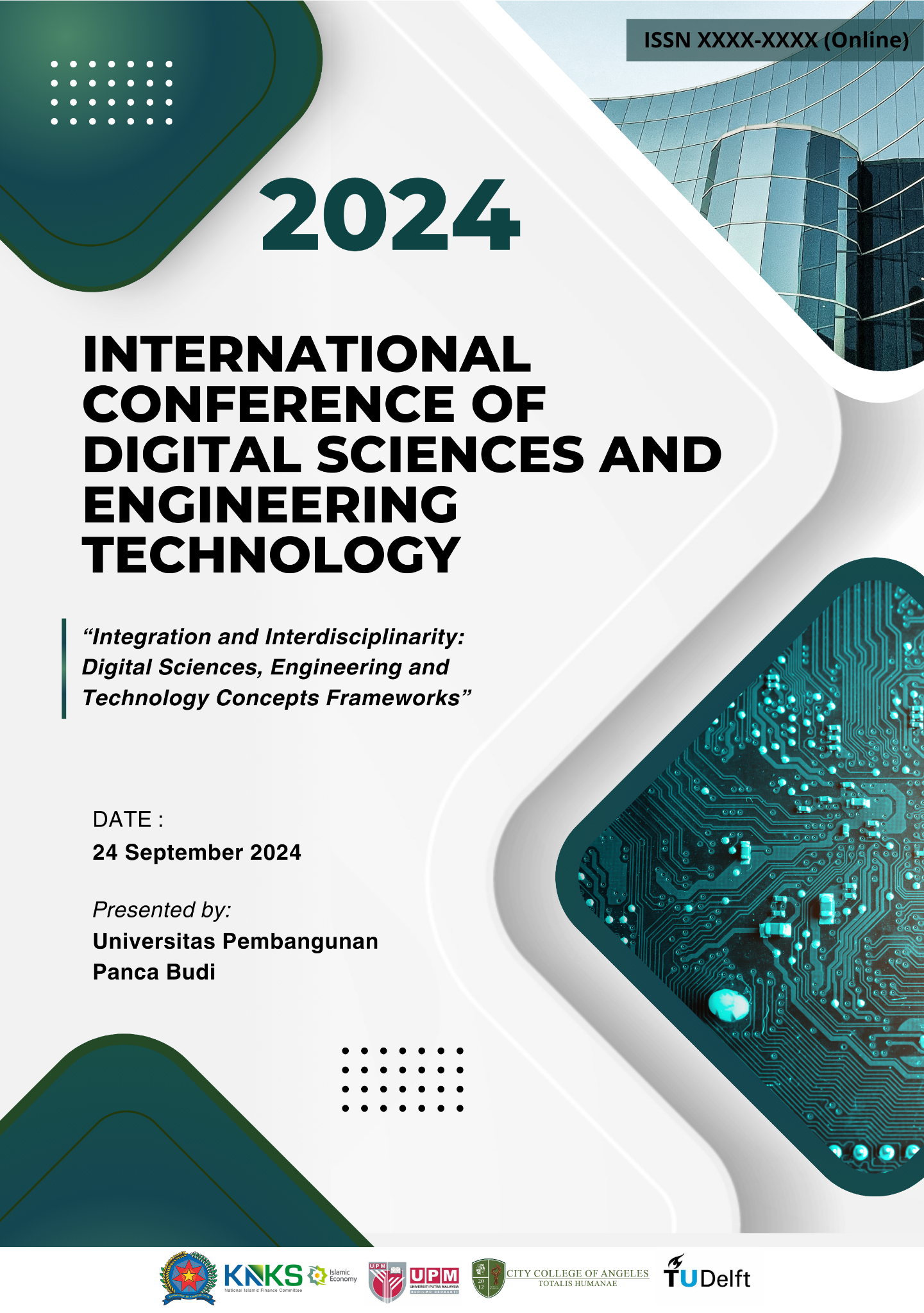Design and Build a Charging Battery Solar Cell Using the Maximum Power Point Tracker (MPPT) System
Keywords:
Solar Panel, Polycrystalline, MPPT, Solar Charge Controller Pulse Width Modulation.Abstract
Solar panels, or often referred to as photovoltaic (PV) panels, are devices that convert direct sunlight into electricity. The polycrystalline type of solar panel is the most commonly used type. The low efficiency of polycrystalline solar panels which is only 13-16% in converting solar energy into electrical energy, requires MPPT technology to increase efficiency, so it is necessary to conduct research to determine the increase in efficiency of the use of SCC MPPT and without the use of SCC MPPT on solar panels at the University of Development Panca Budi Medan City. This study aims to examine how long it takes to charge the battery and how much efficiency increase is produced after using MPPT, with environmental conditions such as solar irradiation, intensity, sunlight and temperature at the Panca Budi Development University, Medan City. The method carried out in this study is to measure and compare the power output produced by Polycrystalline solar panels for 3 (days) of research and interpreted. The results obtained are that SCC PWM shows better performance compared to SCC MPPT. During three days of testing with an average solar irradiation of 571W/m², an average sunlight intensity of 104,305 Lux and an average temperature of 43.85 degrees Celsius, the average SCC MPPT produced a power of 14.44 Watts, while the SCC PWM produced an average power of 21.99 Watts. The average difference in power output produced from the two solar panels is 7.55 Watts. This shows that SCC PWM is proven to be superior to SCC MPPT.
References
M kaliamoorthy, V Rajasekaran, and IGC Raj, “Single-phase fifteen-level grid- connected inverter for photovoltaic system with evolutionary programming based MPPT algorithm,” Solar Energy, pp. 314–329, 2014.
Wasistha, “Efisiensi Pembangkit Listrik Tenaga Surya Off Grid di Laboratorium Teknik Listrik Politeknik Negeri Jakarta”.
B. Azmi et al., “REVIEW PERBANDINGAN TEKNIK MAXIMUM POWER POINT TRACKER (MPPT) UNTUK SISTEM PENGISIAN DAYA MENGGUNAKAN SEL SURYA (REVIEW COMPARISON MAXIMUM POWER POINT TRACKER (MPPT) TECHNIQUE FOR CHARGING SYSTEMS USING SOLAR CELLS).”
J. H. R. Enslin, “MAXIMUM POWER POINT TRACKING: A COST SAVING NECESSITY IN SOLAR ENERGY SYSTEMS,” 1992.
Hamdani, H., Z. Tharo and S. Anisah, PERBANDINGAN PERFORMANSI PEMBANGKIT LISTRIK TENAGA SURYA ANTARA DAERAH PEGUNUNGAN DENGAN DAERAH PESISIR.
P. Siagian, H. Alam, M. Fahreza, and R. J. Tampubolon, “Peningkatan Daya Panel Surya Dengan Konsentrator Cahaya dari Bahan Aluminium Foil,” vol. IX, no. 2, 2024.
A. Faizal, B. Setyaji, J. Teknik Elektro, F. Sains dan Teknologi, U. H. Sultan Syarif Kasim Riau Jl Soebrantas No, and S. Baru, “Desain Maximum Power Point Tracking (MPPT) pada Panel Surya MenggunakanMetode Sliding Mode Control,” Jurnal Sains, Teknologi dan Industri, vol. 14, no. 1, pp. 22–31, 2016.
A. M. Eltamaly and A. Y. Abdelaziz Editors, “Green Energy and Technology Modern Maximum Power Point Tracking Techniques for Photovoltaic Energy Systems.” [Online]. Available: http://www.springer.com/series/8059
Z. Salam, J. Ahmed, and B. S. Merugu, “The application of soft computing methods for MPPT of PV system: A technological and status review,” 2013, Elsevier Ltd. doi: 10.1016/j.apenergy.2013.02.008.
A. Fitriah, F. Wijaya, and E. Fimansyah, “Implementasi Maximum Power Point Tracking (MPPT) Berbasis Perturb and Observe (P&O) pada Photovoltaic (PV) dengan Variasi Iradiasi,” Seminar Nasional CITEE Yogyakarta, pp. 120–124, 2019.
K. Moradi, M. Ali Ebadian, and C. X. Lin, “A review of PV/T technologies: Effects of control parameters,” Int J Heat Mass Transf, vol. 64, pp. 483–500, 2013, doi: 10.1016/j.ijheatmasstransfer.2013.04.044.
Anisah, S., & Tarigan, A. D. (2023). Perencanaan Pembangkit Listrik Tenaga Surya Atap On-Grid sebagai Sumber Energi Alternatif Ramah Lingkungan. INTECOMS: Journal of Information Technology and Computer Science, 6(1), 503-510.
Rahmaniar., B Mesra., Junaidi Agus. (2023). Pemanfaatan Inovasi Teknologi EBT Panel Surya pada Mesin Serut Lidi untuk Pemberdayaan Masyarakat Desa Bandar Senembah. Jurnal SOLMA, 12(3): 1186-1194; 2023
Rahmaniar., Khairul., Junaidi Agus., Sari Keumala Debby. (2023). Analysis of Shadow Effect on Solar PV Plant using Helioscope Simulation Technology in Palipi Village. JTEV (Jurnal Teknik Elektro dan Vokasional). Vol. 9 No. 1 (2023)
Tharo, Z., & Hamdani, H. (2020). Analisis Biaya Atap Pembangkit Listrik Tenaga Surya Skala Rumah Tangga. Journal of Electrical and System Control Engineering, 3(2), 65-71.
Downloads
Published
How to Cite
Issue
Section
License
Copyright (c) 2024 Fauzan Hasibuan; Parlin Siagian, Haris Gunawan

This work is licensed under a Creative Commons Attribution-ShareAlike 4.0 International License.















